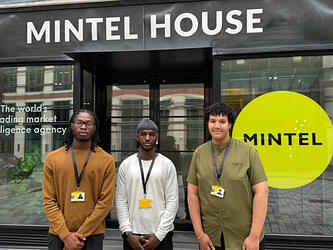Article Not Available
“We’re a bit of a funny company,” says Peter Robinson of Dubit, winners of the MRS 2012 Best Innovation Award. “We were set up by a group of 15- and 16-year-olds 13 years ago. These teenagers basically decided that the internet was going to be the place to communicate and one of the things they created was a Flash-based virtual world – essentially a chat room where kids could go and talk to each other.”
It’s fair to say that research wasn’t top of mind when the Clickroom first launched as Dubit Chat. It proved to be a success in its original guise, gaining half a million users and a BAFTA nomination. “But we knew that in order to keep people coming back to the site, we needed fresh content on there all the time,” says Robinson. “So we went out and spoke to education providers and brands and asked them whether we could get them to put content on there.”
A few brands engaged with it – with Channel 4 one of the first. What they and others were interested in primarily was finding out what kids thought about new advertising ideas and product concepts. Put simply, they wanted to do research.
“From that we created the first direct-to-youth research panel,” says Robinson.
“We signed about 37,000 kids to the panel, 11- to 16-year-olds.” This resulted in a change within the business. “We ended up with an interactive department who built virtual worlds and games for kids, and a research department who went out and spoke to kids to find out what they liked doing.”
The Clickroom clung to its chatroom roots for several years until the arrival in 2009 of Robinson, a career researcher who has worked for The Met Office, Lorien, Nunwood and Quaestor.
“I could see that the platform was really good,” he says, “but it needed to get better because back then it was still very basic.”
Frequent visitors to the Clickroom wouldn’t have noticed much change despite the years of investment and development. The front end went largely untouched, Robinson says. “What’s changed is the back end, which has made it a lot more usable for the moderator and allows us to do more things with the research participants.
“We can show them images, play videos and audio, get them to surf the web. We can run polls within the group, produce heat maps and get the groups to rank brands or products.
“It was a chat room,” says Robinson. “What it is now is a research tool.”
First steps
Research’s visit to the Clickroom begins in an isometric 3D space that looks, to all intents and purposes, like a waiting room – which is what it turns out to be. Here we get a few moments to customise our avatar in whatever combination of hair colour, skin colour, shirt and trousers we see fit. As soon as Robinson is ready he moves us into the room proper. There’s a familiarity to it, like a focus group studio without the awkwardness one can feel when physically surrounded by strangers. I click on one of several chairs arranged in a circle. My avatar wanders over and sits down. I click on several more chairs just to be sure that I’m in control, and a handful of other objects too – a computer, a TV, a magazine on a coffee table. These items don’t work, at least not yet. They act as gateways to the various different stimuli that moderators might want to show participants, but Robinson has yet to switch on that particular function in our session.
He assures me that my initial click-happy behaviour is par for the course. “We tend to have an introduction session at the beginning of each group for the first few minutes, where people can get that urge out of their system – they can walk around, see how it all works. You do see people getting up and wandering about sometimes during the group discussion, but it’s not too bad. The room is interactive to the point where it’s interesting but not overly distracting.”
The design of the room can be altered according to client taste, Robinson explains. “We’ve had a treehouse, a beach with sleeping bags on it, a cinema with vending machines and everything else – it all depends on how much the client wants to invest, which usually depends on how they think they’re going to use it.”
Clients are present during Clickroom sessions, of course, but they don’t get their own avatar. They’re kept behind the virtual equivalent of a two-way mirror where a private chat function allows them to communicate with the group moderator as and when they need to. Individual group participants can also be brought into the private chat for more in-depth questioning.
As for the respondents, it turns out they’re not just kids. Although Dubit was praised for its “youth focus” by the award judges, Robinson says that the Clickroom lends itself to researching time-poor adults. “We do a lot of work with teachers and we do a lot of work with parents as well. What we tend to find is that we can get people involved who usually wouldn’t take part in research because this is more accessible for them. It works as a tool for communicating with people of all ages.”
- Read the complete series of MRS Awards interviews at Research-live.com/awards

We hope you enjoyed this article.
Research Live is published by MRS.
The Market Research Society (MRS) exists to promote and protect the research sector, showcasing how research delivers impact for businesses and government.
Members of MRS enjoy many benefits including tailoured policy guidance, discounts on training and conferences, and access to member-only content.
For example, there's an archive of winning case studies from over a decade of MRS Awards.
Find out more about the benefits of joining MRS here.










1 Comment
Jon Ward
13 years ago
Nice article - particularly love the Avatars for Jill and Claire - very realistic! Hope you guys are all doing well.
Like Reply Report